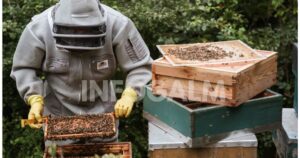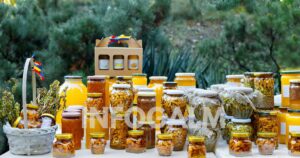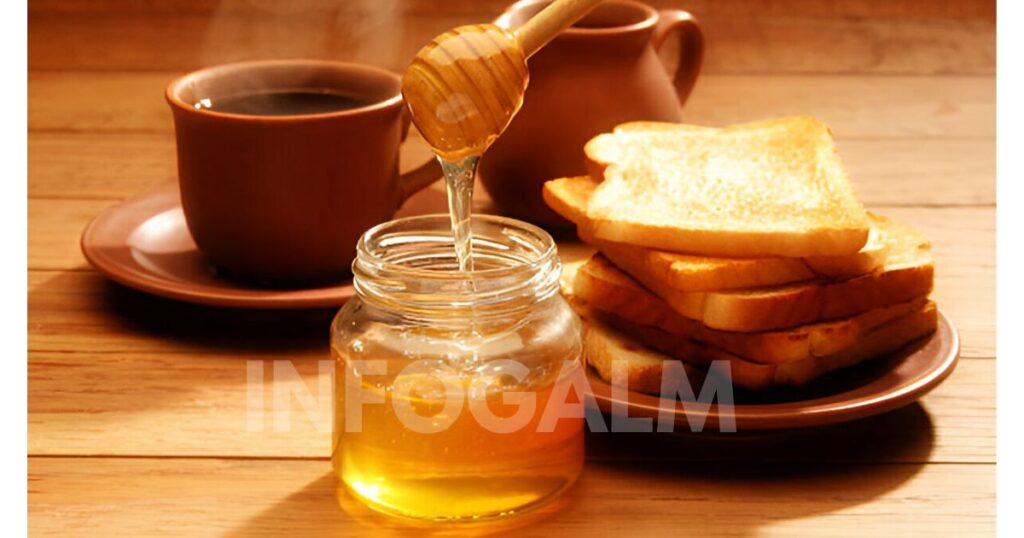Honey and Mielado are revered for their health benefits and well-established customs. Because of their adaptability, they are popular worldwide. This article explores these sugars’ rich history, cultural significance, and cutting-edge applications, completely understanding their enduring appeal.
Introduction to Honey and Mielado
Definition and Overview
Honey, a characteristic sugar created by honey bees from flower nectar, has been a nail in human weight control plans for multiple years. Its rich taste and numerous health advantages have made it a coveted thing across cultures and civilizations. Meanwhile, it, often viewed as a refined partner to honey, has a unique history and cultural importance, especially in Spanish-speaking regions.
Importance in Various Cultures
Honey has had a huge impact on many societies all over the planet. From ancient customs to advanced culinary delights, its impact is broad. Its robust flavour and adaptability are commended in Spanish and Latin American cooking styles, which feature the cultural evolution in the appreciation and use of sugars.
The Origins of Honey

Ancient Beginnings
Honey’s history dates back to ancient times, with proof of its utilization found in prehistoric cave paintings around 8,000 years ago. Early people reputed honey as a food source and for its medicinal properties. Egyptians, Greeks, and Romans respected honey, integrating it into their diets, medicine, and religious practices.
Cultural Significance in Ancient Civilizations
In ancient Egypt, honey was used in offerings to gods and embalming practices and was believed to have preservative qualities. The Greeks considered honey the food of the gods, while the Romans used it as a healing agent and in culinary delights. This deep-rooted reverence for honey established it as a symbol of wealth and health.
The Transition to Mielado
Etymology and Definition
“Mielado” emanates from the Spanish word for honey, “miel.” It generally refers to a thick, dark syrup, often created from cane sugar or specific types of honey, prized for its rich flavour and versatility in culinary applications. This transition from traditional honey to it marks a cultural evolution in the appreciation and utilization of sweeteners.
Mielado in Spanish Culture
It is a special ingredient in Spanish and Latin American cooking styles. It is utilized widely in pastries, beverages, and traditional dishes. Making it, frequently including slow cooking to foster rich flavours, reflects a deep-seated appreciation for craftsmanship and tradition.
The Role of Honey and Mielado in Modern Times
Culinary Uses
Today, honey and mielado are celebrated for their diverse culinary applications. Honey is used in baking, marinades, and beverages, adding profundity to sauces, desserts, and festive dishes. Their exceptional flavours and textures work on the gastronomic experience, making them essential in kitchens worldwide.
Health Benefits
Both honey and mielado offer multiple health benefits. Honey is prevalent for its antibacterial and antioxidant properties, distributing the word about it as a good answer for sore throats, wounds, and skin conditions. It is plentiful in minerals and nutrients and is a nutritious choice compared to refined sugars, advancing better health outcomes.
Economic and Environmental Impact
Honey Production and Beekeeping
Honey production is a major farming action that supports economies and ecosystems. Beekeeping, or apiculture, yields honey and works with fertilization, which is fundamental for crop creation. This advantageous relationship highlights the significance of supportable beekeeping practices to maintain ecological balance and food security.

Mielado Production and Sugar Industry
The production of mielado is closely tied to the sugar industry, particularly in regions with abundant sugar cane or sugar beet crops. The traditional methods of producing mielado reflect a commitment to preserving cultural heritage while supporting local economies. However, modern production techniques also emphasize the need for sustainable and environmentally friendly practices.
Global Trends and Market Dynamics
Demand and Supply
The worldwide demand for honey and mielado keeps rising, driven by the increasing familiarity with their health advantages and culinary adaptability. However, supply chain challenges, such as province breakdown shambles in honey bees and fluctuating sugar stick yields, influence availability and pricing. These dynamics necessitate innovative solutions to ensure consistent supply.
Market Innovations
Innovations in honey and mielado creation, including natural cultivating rehearses and high-level handling methods, are reshaping the market. Buyers are progressively seeking excellent, morally delivered, and environmentally sustainable items. This pattern is driving makers to embrace more transparent and supportable practices.

Cultural Festivals and Traditions
Honey Festivals
Around the world, honey celebrations praise the gathering and feature the cultural significance of honey. These occasions, like the Honey Celebration in Hungary and the Public Honey Show in the UK, feature tastings, competitions, and educational workshops, cultivating a more profound appreciation for this ancient sweetener.
Mielado Celebrations
In regions where mielado is prominent, festivals and culinary events showcase its rich flavours and traditional uses. These celebrations often include cooking demonstrations, tastings, and cultural performances, emphasizing the integral role of mielados in local traditions and cuisines.
Recipes and Dishes Using Honey and Mielado
Baking
Integrate honey or mielado into your favourite biscuits, cakes, or cookies for a characteristic pleasantness that adds depth of flavour. These sugars upgrade the taste and add moisture to baked goods, creating a delightful texture.

Breakfast Options
Sprinkle honey or mielado over yoghurt with new foods grown from the ground for a solid breakfast that will fill your sweet tooth. This mix gives a sound at the beginning of your day, loaded with nutrients, minerals, and cell reinforcements.
Marinating Meats
Marinate meats in honey or mielado, soy sauce, garlic, and ginger for a delectably tacky coating that caramelizes delightfully when barbecued. The sweetness of the honey or mielado balances the exquisite flavours, making a mouth-watering dish.
Refreshing Drinks
Blend honey or mielado with water and lemon juice to make homemade lemonade, or utilize locally acquired forms without artificial flavours. This refreshing drink is ideal for a hot day and gives a characteristic energy source.

Salad Dressings
Add these sweeteners to salad dressings for an unexpected twist on classic vinaigrettes. A touch of honey or michelada can elevate the flavour profile of your salad, making it more enjoyable and nutritious.

Conclusion: The Timeless Appeal of Honey and Mielado
The journey from honey to mielado encapsulates a rich tapestry of history, culture, and culinary masterfulness. Both honey and mielado continue to enthral and sustain individuals worldwide, rising above time and social limits. Their enduring appeal lies in their flexibility, health advantages, and firmly established customs. As we continue to explore and enhance, the tradition of honey and mielado remains a testament to human ingenuity and our enduring connection to nature.
FAQs
- What is the main difference between honey and mielado?
- Honey is a characteristic sugar created by honey bees. It is also a dark, thick syrup frequently made from cane sugar or particular kinds of honey and is particularly well-liked in Spanish and Latin American cuisines.
- Are there health benefits to consuming mielado?
- Yes, it is rich in minerals and vitamins, providing a nutritious alternative to refined sugars and promoting better health outcomes.
- Can I use mielado as a substitute for honey in recipes?
- Absolutely! It can be used as a substitute for honey in most recipes, offering a similar sweetness with a unique flavour profile.
- How is honey used in ancient medicinal practices?
- In ancient times, honey was used to treat wounds, skin conditions, and painful throats due to its antibacterial and antioxidant properties.
- What are some popular dishes that use mielado?
- It is generally utilized in pastries, drinks, and traditional Spanish and Latin American dishes, adding profundity and extravagance to these culinary creations.







